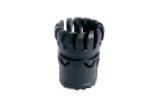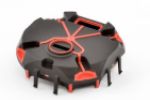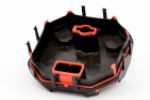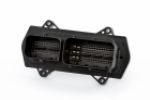Thermoplastic injection molding
Successful through material and energy efficiency
Thermoplastic injection molding is the most frequently used process in plastics molding. It forms the basis for all other injection molding processes. In this process, plastic granules are drawn from a hopper into the screw flights, cut up and sheared. The resulting frictional heat combined with the heat from the heated barrel causes the plastic to melt homogeneously. These melted plastics then collect in front of the tip of the receding screw. In the subsequent injection phase, the screw is hydraulically pressurized at the rear. The plastic melt is thereby forced out under very high pressure of around 500 to 2000 bar and flows through the injection nozzle into the molding cavity of the injection mold.
The thermoplastic molded part in the mold cools down. The mold then opens automatically and the finished molded part is ejected.
Your advantages
- quantities in the millions
- high surface quality as well as very good dimensional stability
- many different material combinations possible
- wide range of materials results in very different material properties
- thermally formable again after solidification






